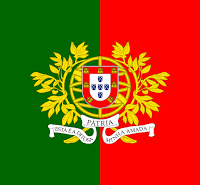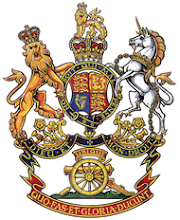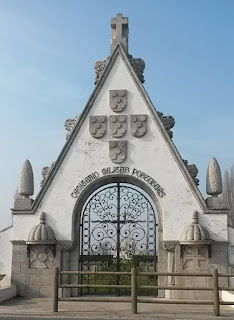 |
| Portuguese National Memorial Cemetery Richebourg |
 |
| Portuguese Declaration of War |
The first Portuguese troops of the Portuguese Expeditionary Corps (Corpo Expedicionário Português, CEP), arrived in Brest, France on February 2nd 1917.
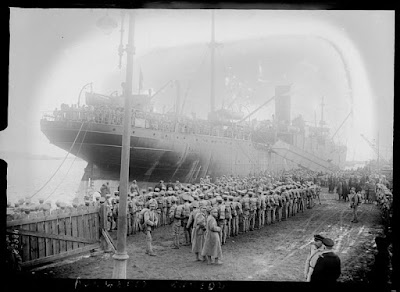 |
| Portuguese Troops arriving in Brest |
 |
| Portuguese Troops in France |
 |
| Portuguese troops in France |
 |
| Portuguese Field Artillery in France |
At the request of the French the Independent Heavy Artillery Corps (Corpo de Artilharia Pesada Independente, CAPI) was formed in January 1917 The CAPI consisted of three Artillery Groups, each with three Batteries equipped with Railway Guns. One Battery operated 320-millimetre (12.6 in) the other two 240-mm (9.5in) or 190-mm (7.5 in)railway guns. The first Portuguese Gunners arrived in October 1917 and under French command were designated Corps d'artillerie lourde portugais (CALP).
In November 1917, the CEP took over a 11 km sector of the front from Laventie to Festubert.
 |
| Portguese Soldiers in the Trenches |
 |
| Portuguese Front - No Mans Land |
The planned relief did not happen. On the 9th April 1918 the Germans launched an attack to break through the Allied lines, which became the Battle of the Lys. In the Portuguese sector 10 German Divisions attacked the 2nd Divisions of the CEP and easily broke through the Portuguese lines, with only small pockets of resistance. The Portuguese Division was forced back to Estaires, it's losses included over 6,500 men taken prisoner.
The Portuguese Gunners fought valiantly, firing continually from the beginning of the attack at 07:00 till they were overrun 4 hours later.
The gap in the line was filled by the deployment of the 50th (Northumbrian) Division and the 51st (Highland) Division.
 |
| Battle of Lys 1918 |
The total losses of the CEP on the Western Front in 1917-1918 amounted to 2,160 dead, 5,224 wounded and 6,678 prisoners.
The Portuguese National Cemetery Richebourg contains 1,831 graves of which 239 are unknown soldiers. The majority of the casualties are from the Battle of the Lys. The cemetery was opened in 1928.
 |
| Portuguese National Cemetery Richebourg |
 |
| Portuguese National Cemetery Richebourg |
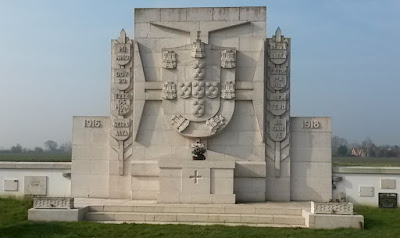 |
| Portuguese National Cemetery Richebourg Memorial |
 |
| Portuguese National Cemetery Richebourg Selfie |
 |
| Portuguese National Cemetery Richebourg Shrine to Our Lady of Fatima |

